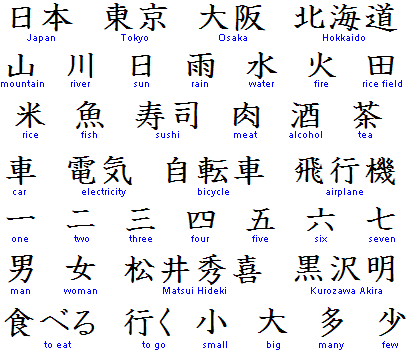Field Journal: Module 2
Ch. 1-4 Review
October 9, 2012
Back in High school I tried to take Japanese and did alright... sort of. I memorized the Hiragana and Katakana fine, but when it came to the Kanji (Chinese characters). Memorizing them, let alone trying to write out some of the characters in class was a hassle, because they looked so complex. Well high school is over for me, and I barely remember just what I've learned from taking Japanese. So why do I bring this up? Because one of the chapters talks about the history of Chinese writing (where Kanji originated), and I read this hoping to get a better understanding of it, since I crashed and burned trying to memorize Kanji the first time around.
Like many other languages, it seemed that Chinese writing evolved from a non-linguistic symbolic system (a.k.a pictograms).

The above pictograms are examples found on the Oracle Bone, which was the first evidence of the beginning of Chinese writing. So, going back to Japanese, there were at least 3 main alphabets I had to learn, which were Kanji, Hiragana, and Katakana (all of which were mentioned at the top). Hiragana is basically simplified Kanji used for the native language, and Katakana if i remember correctly from my class, is used to pronounce non-Japanese/Chinese words, like my name Kevin, or McDonalds. Lastly, Kanji in the Japanese alphabet consists of about one thousand characters. All three types of writing are found in written text and literature, with Kanji being usually very complex. Often you would find Hiragana being written next to the Kanji to decode it. Of course when you translate both the Japanese and the Chinese characters, they both have the same meaning, however the pronunciations are completely different.

Kanji

Basically, Asian languages had evolved out of the Chinese characters, only simplified for ease of use, which increased literacy, and adapted cultural differences. I'm of both Japanese and Chinese descent, so this section of the book interested me because of that. I still want to learn more about Japanese, and hopefully get Kanji down soon. I like this section of the book a lot because it rekindled my interest in learning Japanese.
By: Kevin Young
References:
References:
No comments:
Post a Comment